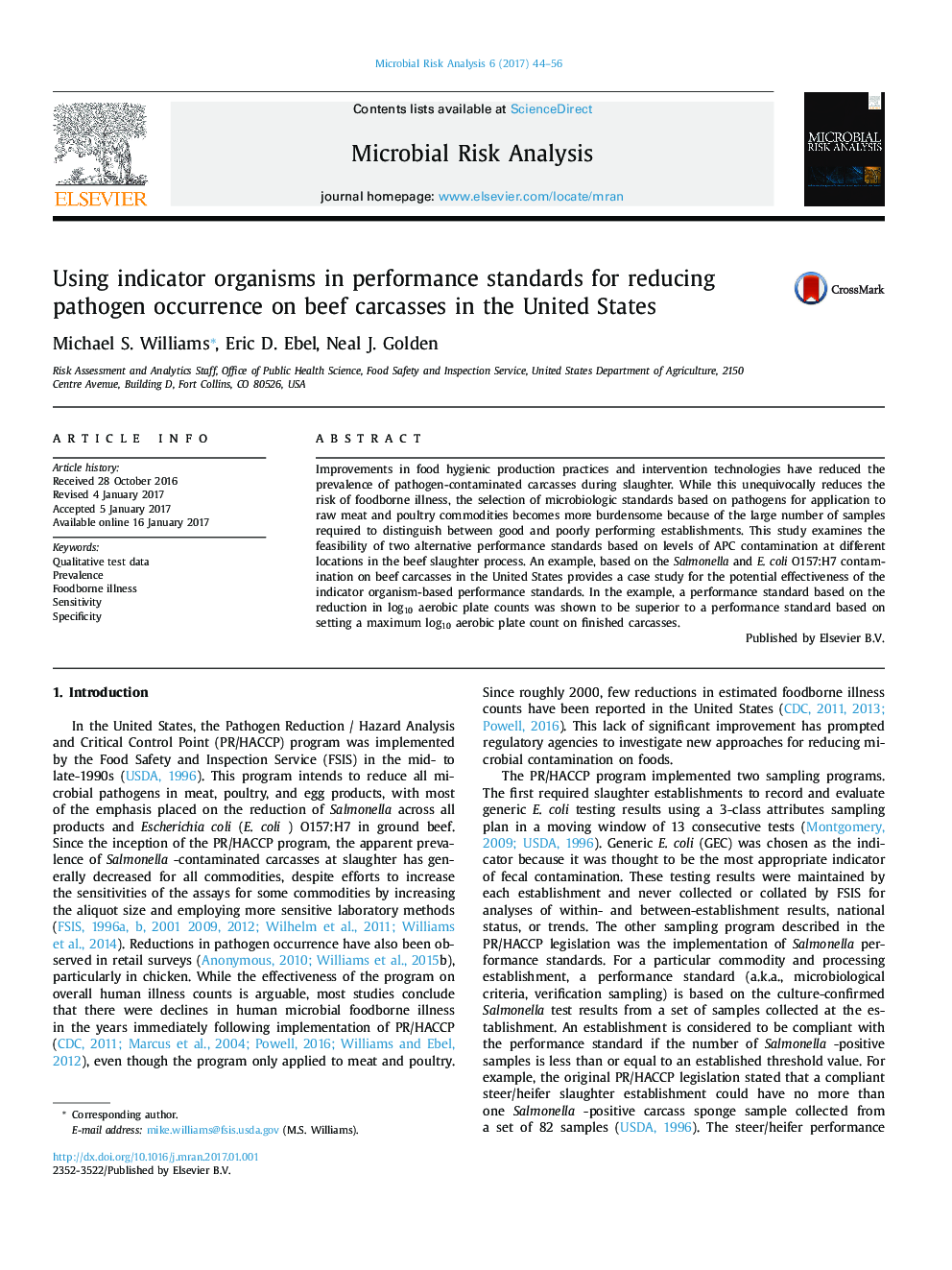| کد مقاله | کد نشریه | سال انتشار | مقاله انگلیسی | نسخه تمام متن |
|---|---|---|---|---|
| 5739670 | 1615862 | 2017 | 13 صفحه PDF | دانلود رایگان |
- Pathogen performance standards are impractical when prevalence is low.
- 933 paired beef carcasses samples were collected from 138 establishments.
- Pairs samples were collected prior to evisceration and before chilling.
- Samples were evaluated for APC, E. coli O157:H7, and Salmonella.
- Utility of indicator organisms-based performance standards is assessed.
Improvements in food hygienic production practices and intervention technologies have reduced the prevalence of pathogen-contaminated carcasses during slaughter. While this unequivocally reduces the risk of foodborne illness, the selection of microbiologic standards based on pathogens for application to raw meat and poultry commodities becomes more burdensome because of the large number of samples required to distinguish between good and poorly performing establishments. This study examines the feasibility of two alternative performance standards based on levels of APC contamination at different locations in the beef slaughter process. An example, based on the Salmonella and E. coli O157:H7 contamination on beef carcasses in the United States provides a case study for the potential effectiveness of the indicator organism-based performance standards. In the example, a performance standard based on the reduction in log10 aerobic plate counts was shown to be superior to a performance standard based on setting a maximum log10 aerobic plate count on finished carcasses.
Journal: Microbial Risk Analysis - Volume 6, August 2017, Pages 44-56
